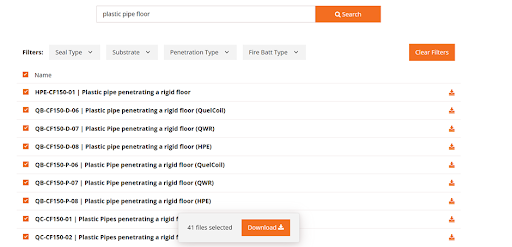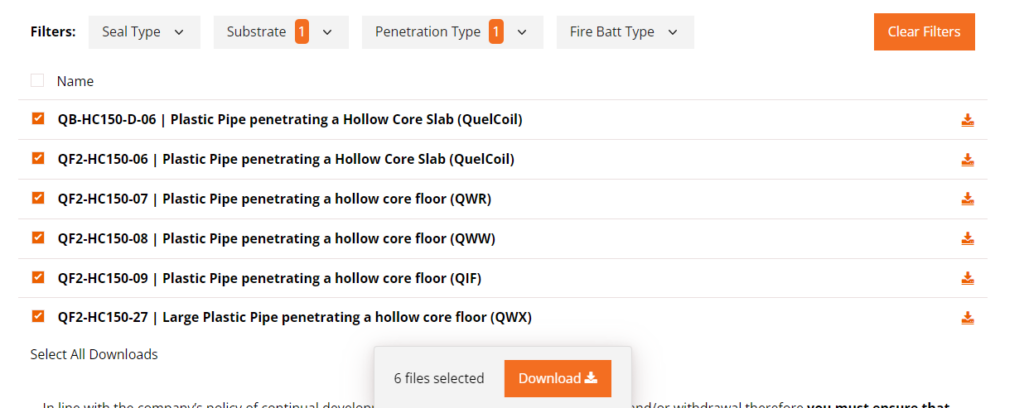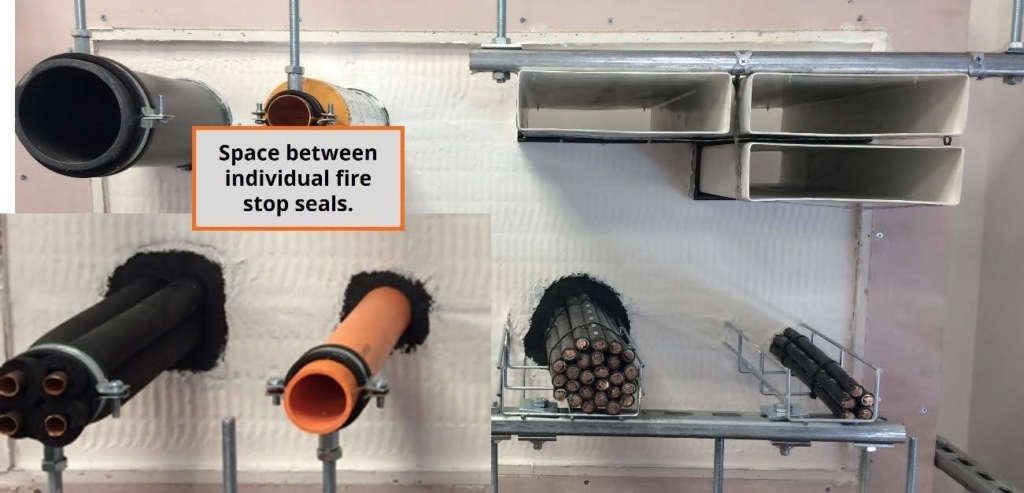Picture this. You reach out to a manufacturer for guidance on installing a plastic pipe through a floor. Instead of a clear, concise answer, you’re bombarded with an abundance of tested firestopping details. This quantity of information leaves you more uncertain than ever, unsure of the next step.
Sound familiar?
This knowledge hub explains the importance of providing manufacturers with detailed and specific information about your application.
Service penetration sealing is complex, requiring attention to detail and collaboration between all trades. The ultimate reason firestopping must be designed and installed compliantly is to save lives and protect property, so choosing the correct tested solution is critical.
When it comes to firestopping, there are many required variables, from different types of walls and floors to services and fire ratings. These variables determine the most suitable firestopping installation details for your application. Therefore, to help us help you, we need as much specific information as possible.
A working example
In this example, you’re looking for a solution for a 110mm U-PVC pipe penetrating a hollow core floor. The pipe shares the penetration with another pipe, meaning there is minimal spacing, and requires an EI 120 fire-resistance rating.
When you search ‘plastic pipe floor’ on our standard installation detail downloads page, 41 tested details become available. That is a lot of information to take in!

However, when using the drop-down filters to select the substrate as ‘hollow core floor’ and the penetration type as ‘plastic pipe,’ the 41 tested details become six.

Once the substrate and penetration type have been confirmed, the next step is to look at the specific project requirements. The five tested details must be reviewed to determine which solutions are for U-PVC pipes and offer an EI 120 fire-resistance rating. This requires a process of elimination to see what options are available. In this case:
- QF2-HC150-27 is for large diameter pipes
- QB-HC150-D-06 provides EI90 only, not the required EI120
- QF2-HC150-07 provides 120 minutes integrity but only 90 minutes insulation (E120/EI90)
- QF2-HC150-09 provides an EI180 rating, rather than the required EI120
There are, therefore, two clear tested details appropriate: QF2-HC150-08 and QF2-HC150-06.
When choosing between these two solutions, it’s important to consider the granular details. Given the minimal spacing between the services onsite, detail 06 would be the most suitable option because it permits a minimal spacing of 0mm between the seals, unlike detail 08, which has a 30mm minimum spacing.

At Quelfire, we believe that simply stating you have a plastic pipe going through a floor is too generic. There are other things that need to be considered to identify the correct detail from the portfolio of standard details.
By providing us with specific information using our Information Collection Form (ICF), for instance, you’re helping us to help you. This approach reduces waiting times and minimises back-and-forth communication, ensuring you receive answers to your applications more quickly, efficiently, and most importantly, accurately.
Learn more about the benefits of using the ICF.
Watch the video:
If you have any further questions, please don’t hesitate to contact us at technical@quelfire.co.uk.

